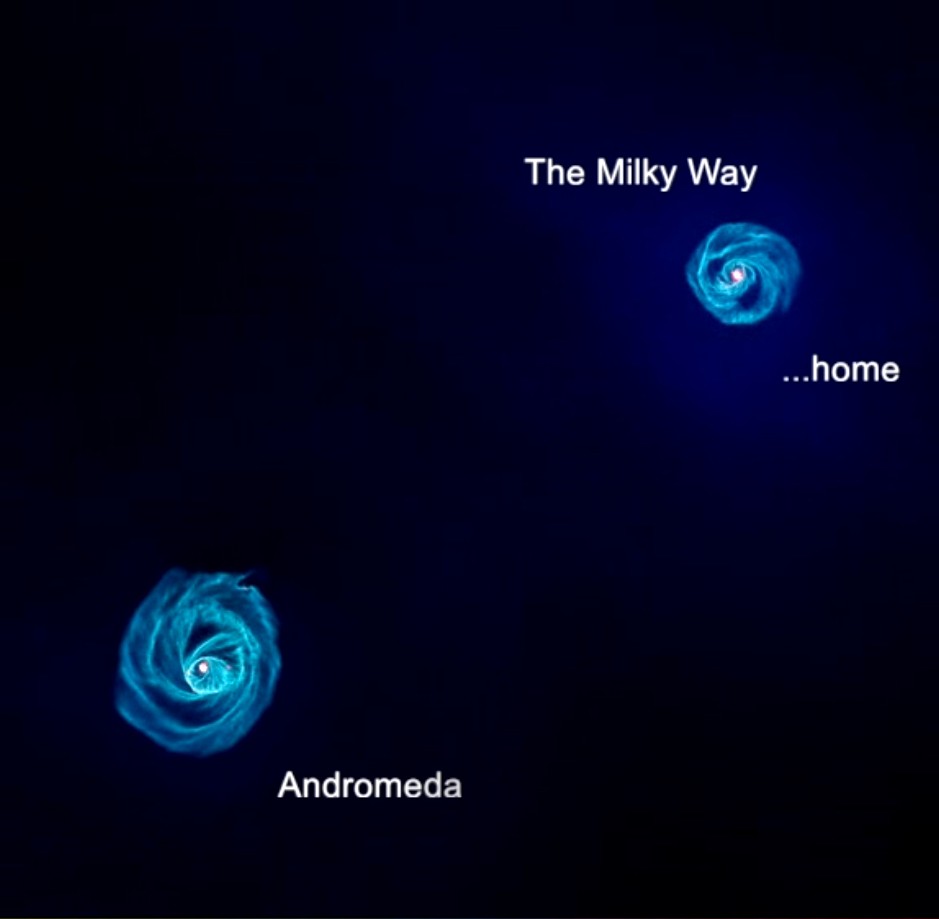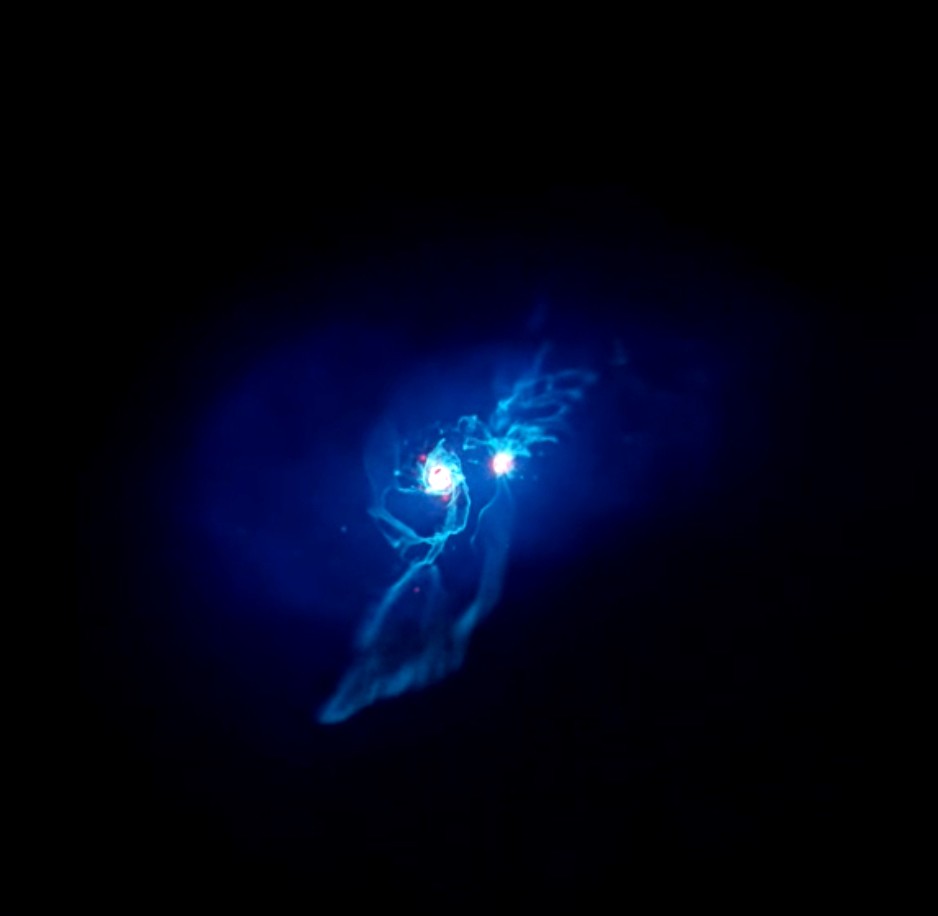The Andromeda Galaxy Is Not Bigger Than the Milky Way After All
The Milky Way is headed for a collision with the neighboring Andromeda galaxy, but scientists may need to re-evaluate how that collision will go: New research suggests Andromeda is smaller than astronomers, thought which may affect what happens when they crash.
Previous studies suggested that the Andromeda galaxy was two or three times the size of the Milky Way, but a new tool for measuring the mass of galaxies reveals that our nearest neighbor is just about the same size as our own galaxy, according to a statement from the International Centre for Radio Astronomy Research (ICRAR).
Specifically, the new study shows that the Andromeda galaxy is 800 billion times heavier than the sun, which is roughly the same weight as the Milky Way, according to the statement. [Stunning Photos of Our Milky Way Galaxy (Gallery)]
The researchers were able to pin down the mass of the Andromeda galaxy using a new technique that measures the speed required to escape a galaxy.
"When a rocket is launched into space, it is thrown out with a speed of 11km/s [6.8 miles/s] to overcome the Earth's gravitational pull," Prajwal Kafle, lead author of the study from the University of Western Australia, said in the statement. "Our home galaxy, the Milky Way, is over a trillion times heavier than our tiny planet Earth so to escape its gravitational pull we have to launch with a speed of 550km/s [342 mi/s]. We used this technique to tie down the mass of Andromeda."
It is possible that earlier studies overestimated the amount of dark matter in the Andromeda galaxy, making it appear larger than it really is, according to the statement.
Dark matter represents 80 percent of the mass of the universe. The unseen substance is largely concentrated in galaxies and therefore believed to be the "glue" that holds galaxies together.
Breaking space news, the latest updates on rocket launches, skywatching events and more!
"By examining the orbits of high-speed stars, we discovered that this galaxy has far less dark matter than previously thought, and only a third of that uncovered in previous observations," Kafle said.
The Andromeda galaxy is a giant spiral galaxy located only 2.5 million light-years away, making it visible at night to the naked eye. Together, the Andromeda and Milky Way galaxies dominate the Local Group of galaxies.
Astronomers have found that our Milky Way is bound for a head-on collision with the similar-size Andromeda galaxy 4 billion years from now. Although previous studies have suggested that Andromeda will engulf the Milky Way, the new findings call for updated simulations of the eventual intergalactic collision, the researchers said.
"It completely transforms our understanding of the local group," Kafle said in the statement. "We had thought there was one biggest galaxy and our own Milky Way was slightly smaller but that scenario has now completely changed. It's really exciting that we've been able to come up with a new method and suddenly 50 years of collective understanding of the local group has been turned on its head."
Their findings were published Feb. 15 in the journal Monthly Notices of the Royal Astronomical Society.
Follow Samantha Mathewson @Sam_Ashley13. Follow us @Spacedotcom, Facebook and Google+. Original article on Space.com.

Samantha Mathewson joined Space.com as an intern in the summer of 2016. She received a B.A. in Journalism and Environmental Science at the University of New Haven, in Connecticut. Previously, her work has been published in Nature World News. When not writing or reading about science, Samantha enjoys traveling to new places and taking photos! You can follow her on Twitter @Sam_Ashley13.


